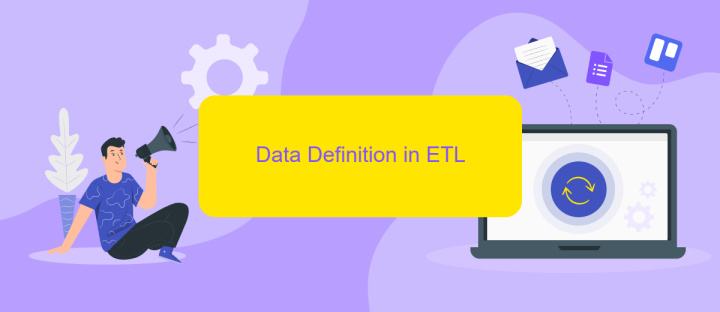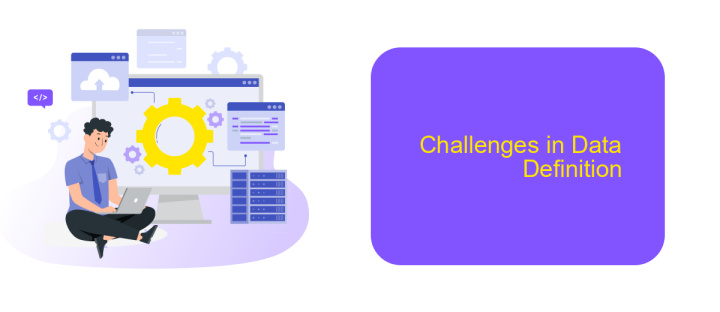ETL Data Definition
ETL (Extract, Transform, Load) is a fundamental process in data management and analytics, enabling the seamless integration and transformation of data from various sources into a centralized data warehouse. This article delves into the definition and significance of ETL, exploring its components, methodologies, and best practices to ensure efficient data processing and insightful business intelligence.
Introduction
ETL (Extract, Transform, Load) processes are fundamental to modern data management, enabling organizations to efficiently handle vast amounts of data from multiple sources. By extracting data from various systems, transforming it into a suitable format, and loading it into a centralized repository, businesses can make data-driven decisions with greater accuracy and speed.
- Extraction: The process of retrieving data from different sources such as databases, APIs, and flat files.
- Transformation: Converting the extracted data into a format that can be analyzed, often involving cleaning, filtering, and aggregating data.
- Loading: Inserting the transformed data into a target database or data warehouse for further analysis and reporting.
Services like ApiX-Drive simplify the integration of various data sources by automating the extraction and loading processes. This not only reduces the time and effort required for manual data handling but also ensures data accuracy and consistency. By leveraging such tools, organizations can focus on analyzing data and deriving actionable insights, rather than getting bogged down by the complexities of data integration.
ETL Process

The ETL process, which stands for Extract, Transform, Load, is a critical component in data integration and management. During the extraction phase, data is collected from various sources such as databases, APIs, or flat files. This data is then transformed to fit the analytical or operational needs of the organization. Transformation may involve cleaning, filtering, aggregating, or enriching the data to ensure it is in the correct format and quality for analysis. Finally, the data is loaded into a target system, such as a data warehouse, where it can be accessed and used for reporting and decision-making.
Modern ETL processes can be significantly enhanced by using integration services like ApiX-Drive, which streamline the connection between different systems and automate data workflows. ApiX-Drive allows users to set up integrations without extensive coding knowledge, making it easier to synchronize data from various sources. This not only saves time but also reduces the risk of errors in the data integration process. By leveraging such tools, organizations can ensure their ETL processes are efficient, reliable, and scalable.
Data Definition in ETL

Data Definition in ETL (Extract, Transform, Load) is a critical step in the data integration process. It involves specifying the structure, format, and types of data that will be extracted from source systems, transformed into a suitable format, and loaded into a target database or data warehouse. This step ensures that data is consistent, accurate, and ready for analysis.
- Identify Data Sources: Determine the databases, applications, or files from which data will be extracted.
- Define Data Types: Specify the types of data such as integers, strings, dates, and more.
- Set Data Formats: Establish the format in which data should be stored, ensuring compatibility across systems.
- Data Mapping: Create mappings to transform data from source formats to target formats.
- Validation Rules: Define rules to ensure data quality and integrity during the ETL process.
Services like ApiX-Drive can streamline the data definition process by offering pre-built integrations and automation tools. These services help in setting up and managing data flows between various systems, ensuring that data is accurately defined and seamlessly integrated. By leveraging such tools, organizations can enhance the efficiency and reliability of their ETL processes.
Challenges in Data Definition

Defining data in the ETL process comes with its own set of challenges. One of the primary difficulties is ensuring data consistency across various sources. Inconsistent data can lead to inaccurate analyses and poor decision-making, which can significantly impact business operations.
Another challenge is handling large volumes of data. With the exponential growth of data, it becomes increasingly difficult to manage, process, and store this data efficiently. Additionally, maintaining data quality while integrating data from disparate sources is a complex task that requires meticulous attention to detail.
- Data consistency across sources
- Managing large volumes of data
- Maintaining data quality
- Integrating disparate data sources
To address these challenges, organizations can leverage integration services like ApiX-Drive. ApiX-Drive simplifies the process of connecting various data sources, ensuring seamless data flow and consistency. By automating data integration, it helps businesses maintain high data quality and manage large datasets more effectively, thereby enhancing overall data management and decision-making processes.
- Automate the work of an online store or landing
- Empower through integration
- Don't spend money on programmers and integrators
- Save time by automating routine tasks
Conclusion
In conclusion, ETL (Extract, Transform, Load) processes are fundamental for efficient data management and integration. They enable organizations to collect data from various sources, transform it into a usable format, and load it into a target system for analysis and decision-making. By implementing robust ETL strategies, businesses can ensure data accuracy, improve operational efficiency, and gain valuable insights from their data assets.
Moreover, leveraging tools and services like ApiX-Drive can significantly streamline the ETL process. ApiX-Drive offers seamless integration capabilities, allowing organizations to automate data workflows and reduce manual intervention. This not only saves time but also minimizes the risk of errors, ensuring that data is consistently reliable and up-to-date. As data continues to grow in volume and complexity, adopting effective ETL solutions will be crucial for maintaining a competitive edge in the data-driven landscape.
FAQ
What is ETL in Data Warehousing?
Why is ETL important?
What are the common challenges in ETL processes?
How can I automate ETL processes?
What is the difference between ETL and ELT?
Apix-Drive is a universal tool that will quickly streamline any workflow, freeing you from routine and possible financial losses. Try ApiX-Drive in action and see how useful it is for you personally. In the meantime, when you are setting up connections between systems, think about where you are investing your free time, because now you will have much more of it.


